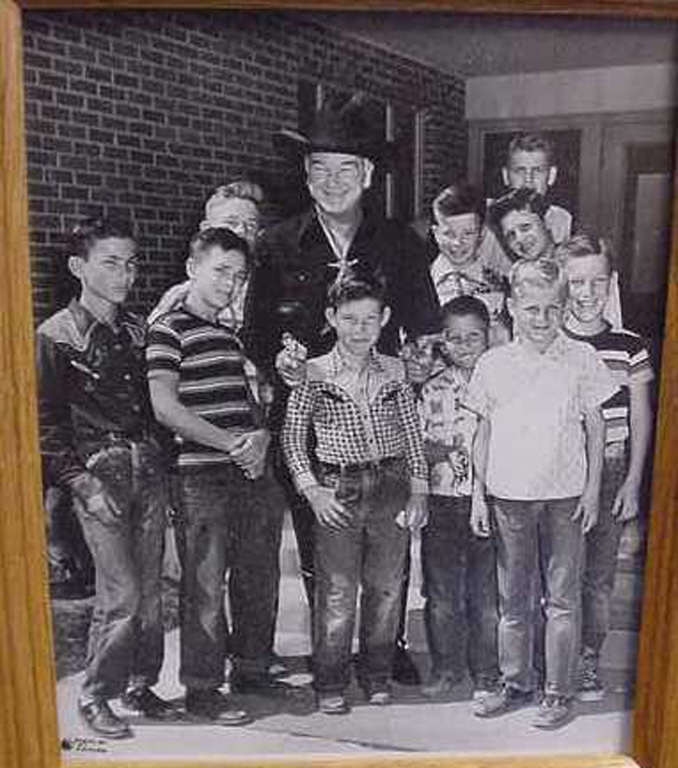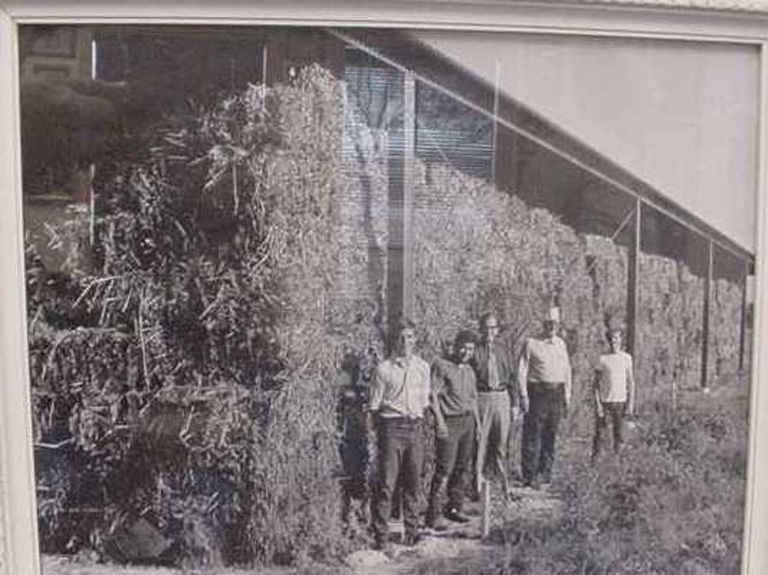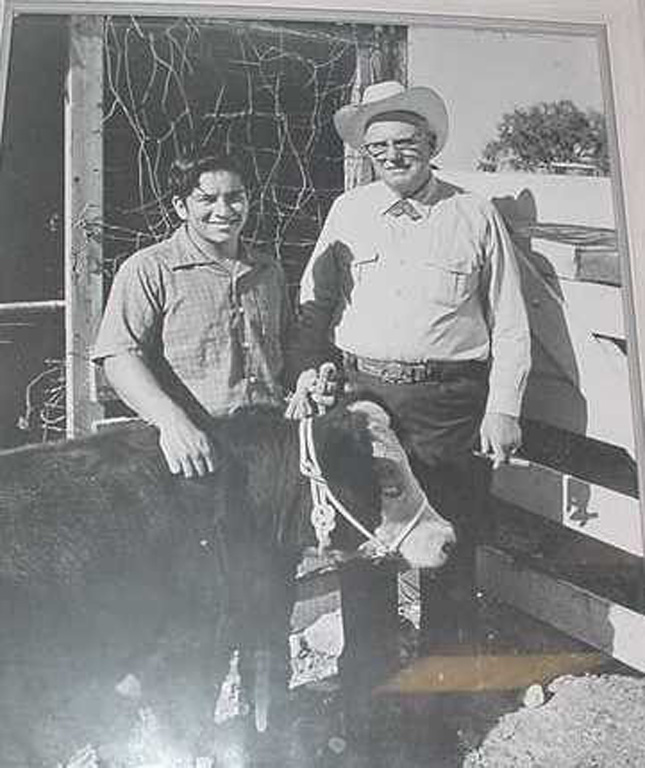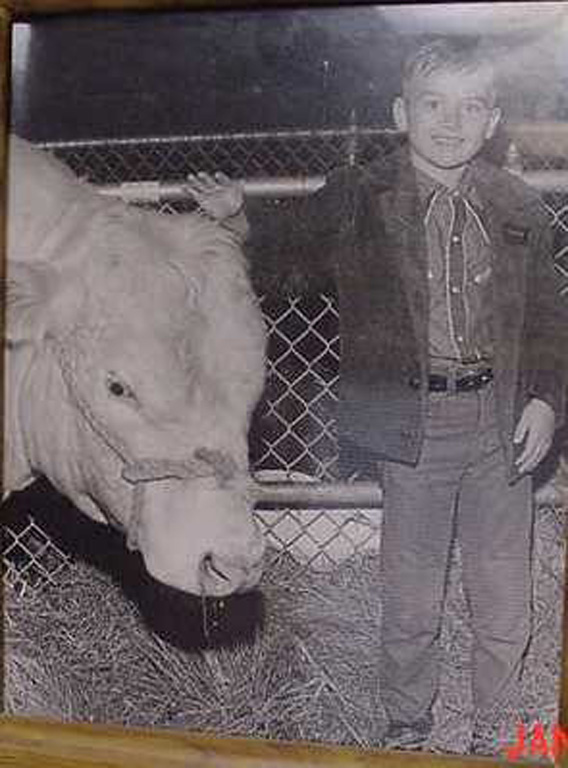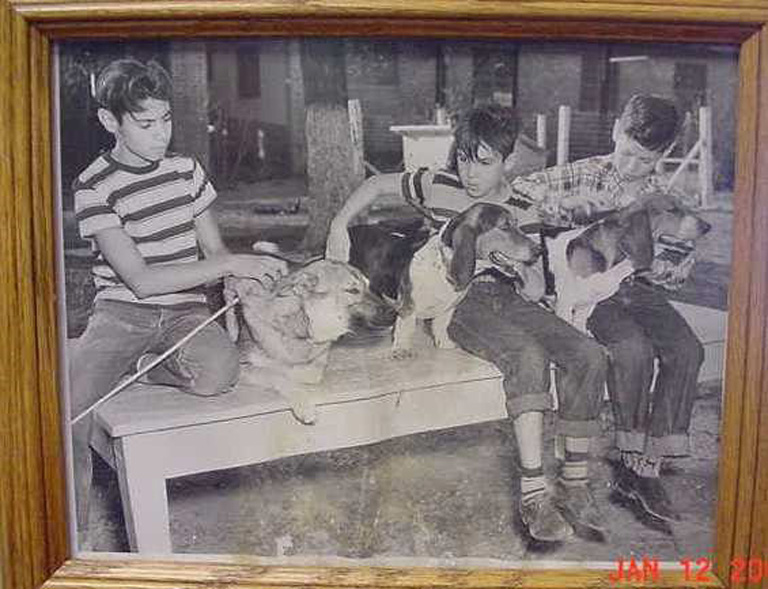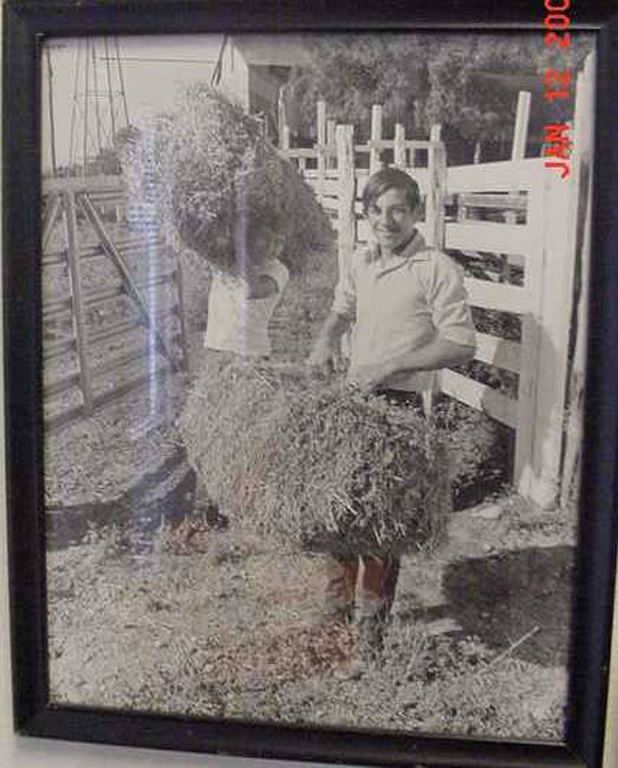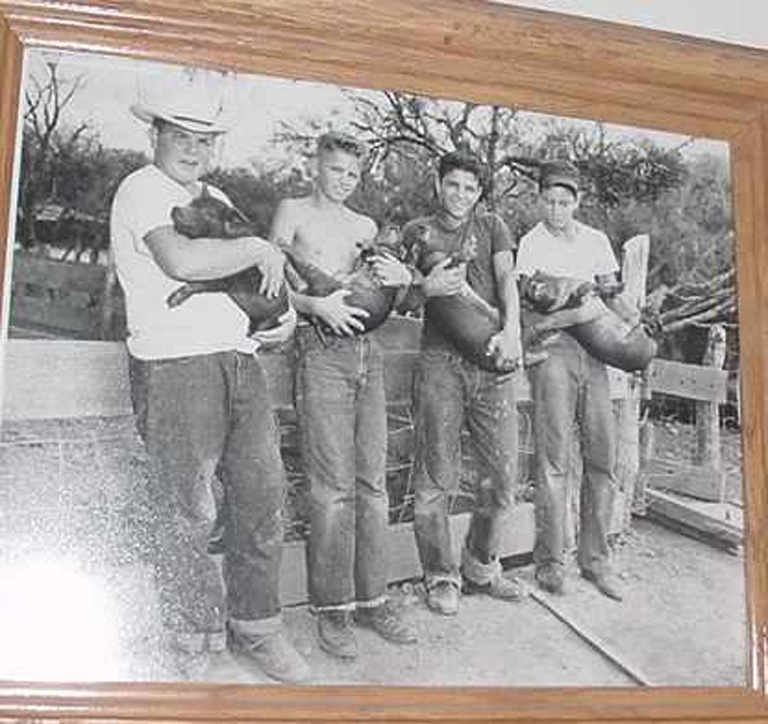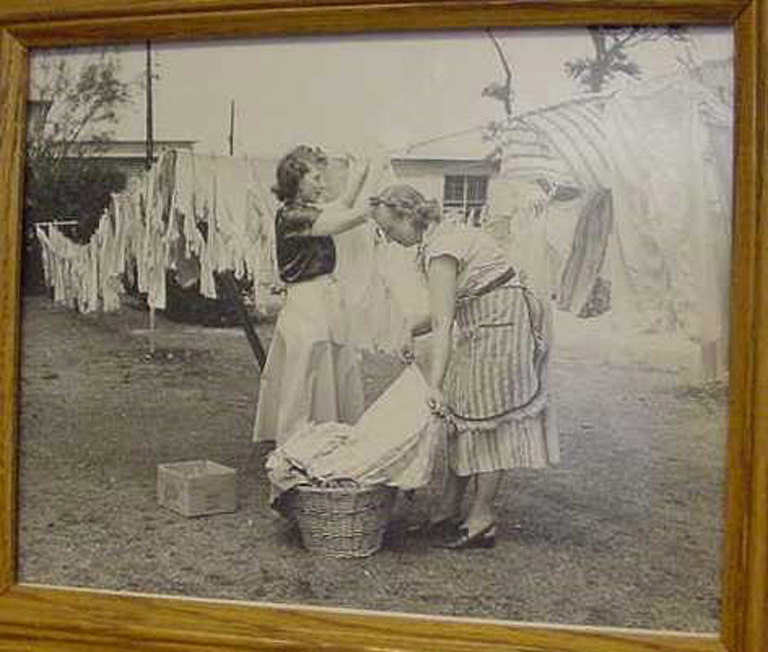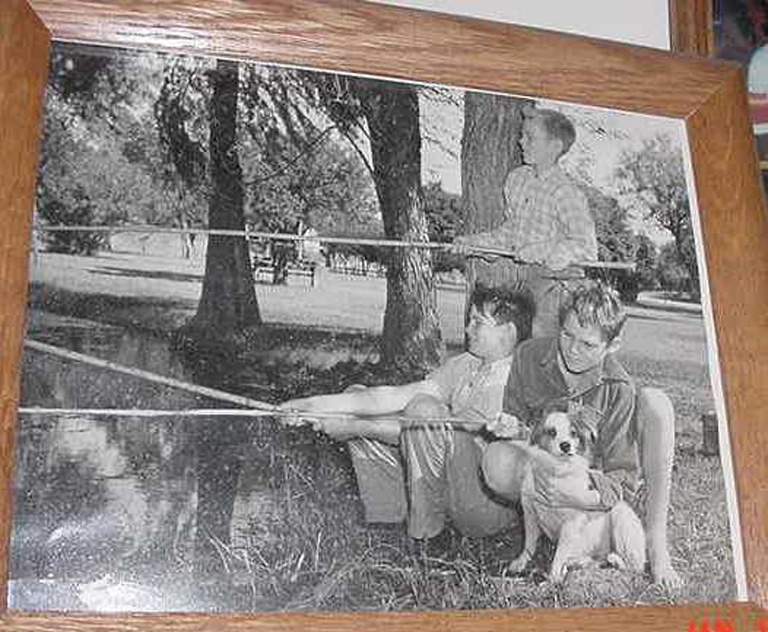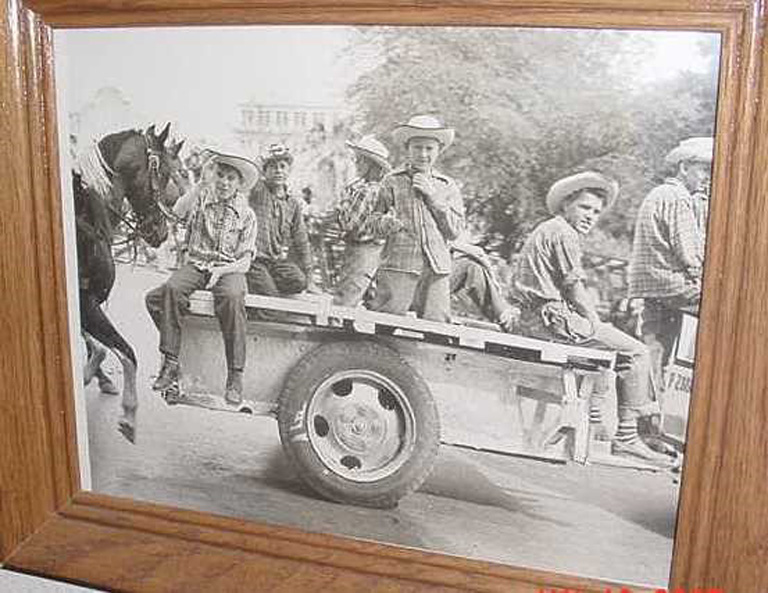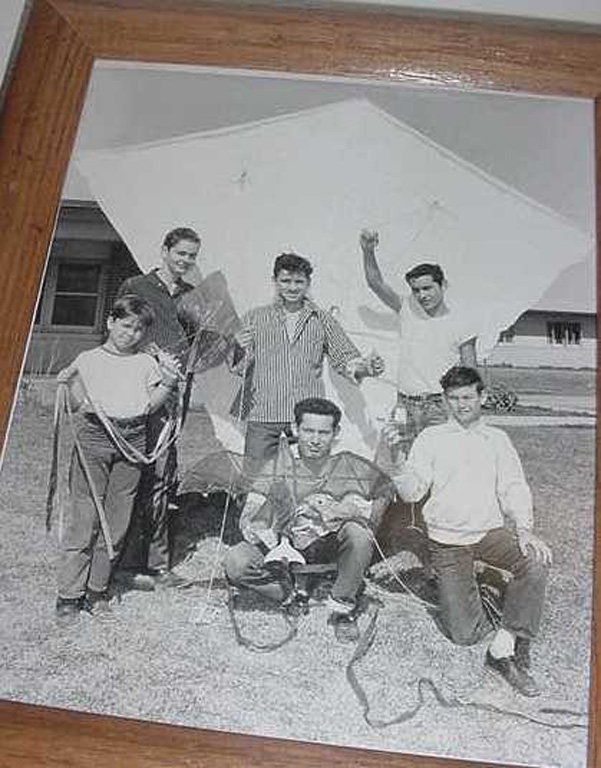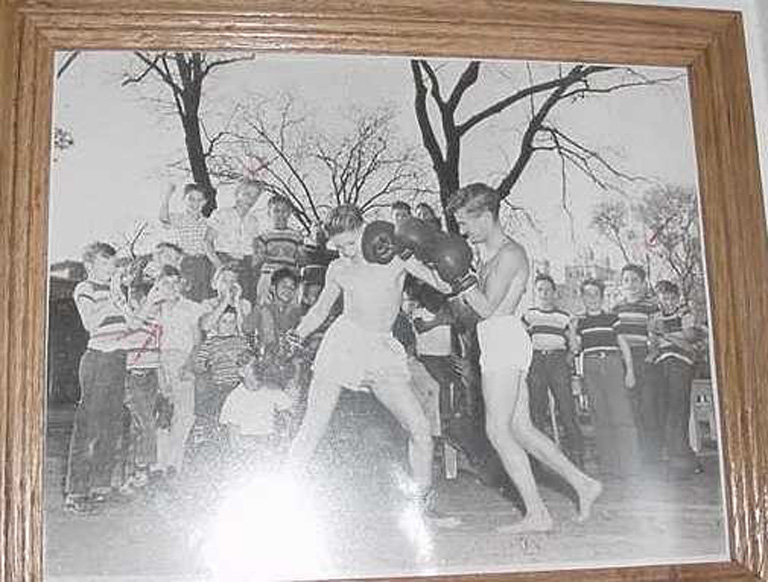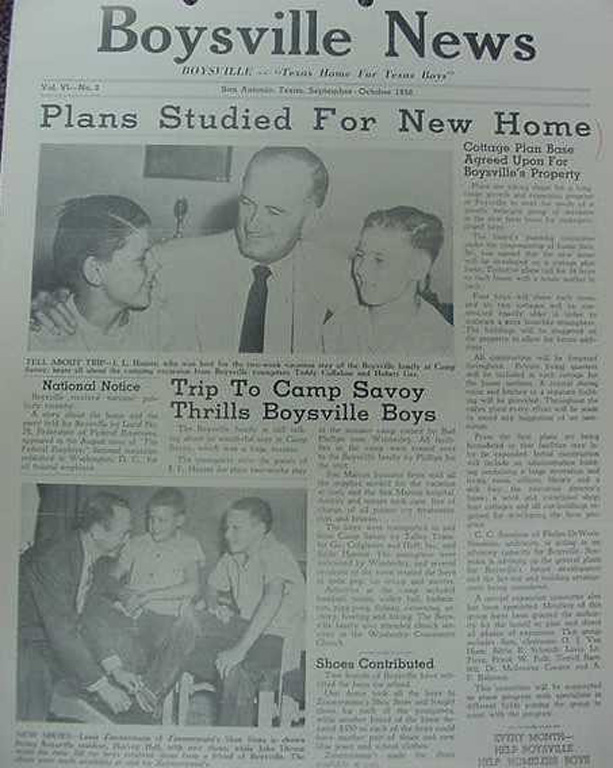History of Boysville
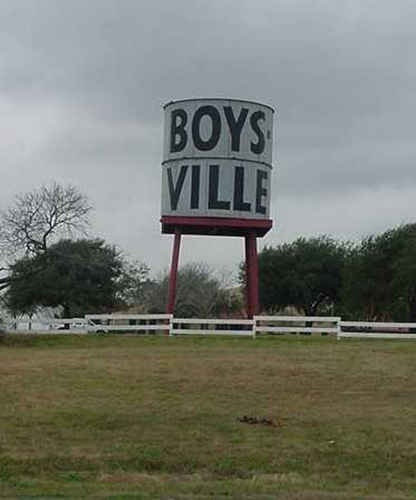
On this site, starting in 1953 and lasting until 1983, stood Bosville, a home for “throwaway” youngsters. Boysville started in a house located in downtown San Antonio. Founder Don Holiman, concerned with the plight of homeless boys during World War II, reached into his own pocket to begin a ministry of care by providing these youngsters with hot meals, clean clothes, safe shelter and spiritual guidance. In 1943, Holiman later turned to the business community for help. The Kiwanis Club of San Antonio and the San Antonio Optimist Club responded, and as the program continued to grow, Boysville appealed to the public for support. Today, having touched the lives of thousands of youth, over 57 years, contributors have continued their generous support of their mission to help boys and girls become successful adults.
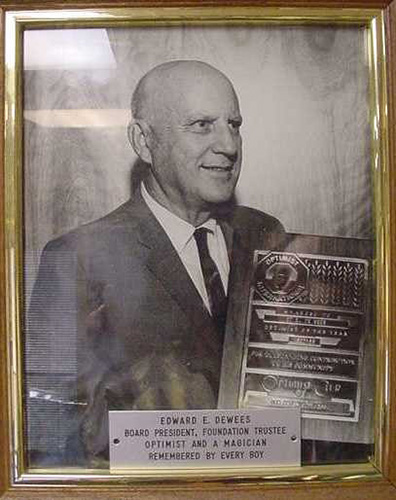
When Boysville relocated to this property, IH 35 was called Austin Hwy. The new campus was home to at-risk boys for the next 30 years. They lived in dormitories and ate together in a central dining hall. Boysville's farm and ranch program began at this time.
In 1983, Boysville sold the property and built a modern campus at its present location on Loop 1604 near the campus of Judson High School. The new facilities provided for a more "family-like" setting in which to care for children. Since the program was expanded to include girls in 1986, Boysville has been even better able to strengthen families by serving large sibling groups.
Although Boysville has seen tremendous change in its 57 years of caring for children, one constant remains: our mission to help children become responsible adults.
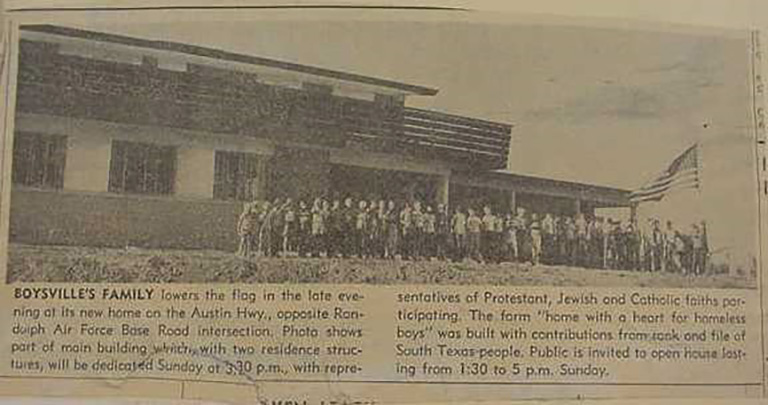
Paula Allen: Boysville facilities evolved as needs of at-risk youths expanded
San Antonio Express-News
I was out four-wheeling on property on the southwest side of Interstate 35 and Loop 1604 and found a large concrete slab from a demolished building, as well as several smaller concrete slabs around a paved area. I hear the old Boysville was in this area, but were there also cottages? When and why did these places close down?
Carl Buckert
Just as children outgrow their clothes, this 61-year-old residential-care facility for at-risk youth has gone through a few locations, moving to meet changing needs. The former campus you refer to was its second home. "Each move was precipitated by a growth in the number of children served," says Boysville Inc. Development and Finance Director Edward S. Baxter.
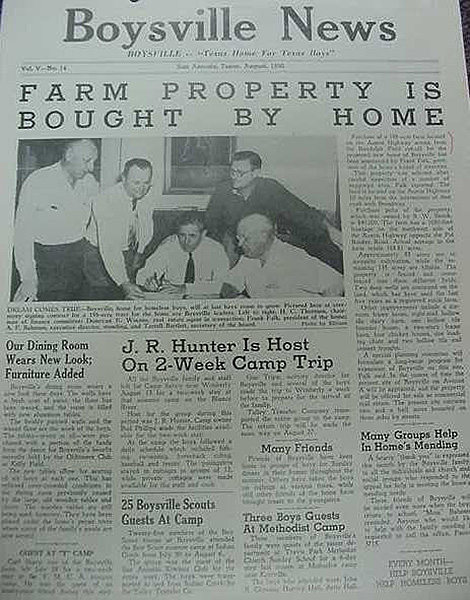
The beginnings of Boysville were downtown when Minister Don Holiman founded the Big Buddy Boys Home. Having encountered a number of homeless boys, says the organization's history, Holiman was moved to "reach into his own pocket (to provide) these 'throwaway' youngsters with hot meals, clean clothes, safe shelter and spiritual guidance." Holiman's pockets were not that deep; he appealed to local Kiwanis and Optimists clubs and gained their support for an ongoing ministry.
Then as now, the children served by what soon became Boysville were not necessarily orphans, nor were they incorrigible juveniles. A Spring 1954 Boysville newsletter (on file in the San Antonio Public Library) sketches the history of a typical resident: A single mother, either widowed or deserted, falls seriously ill or dies. A co-worker agrees to take the boy in until relatives can be found. The search is unsuccessful; often alone and frightened, the boy takes to the streets. Meanwhile, he has fallen behind in school and may have developed behavior problems. He doesn't belong in the criminal justice system but needs more intensive help than most foster parents could give.
While some newspaper accounts mention Holiman housing his earliest charges in a downtown warehouse, the facility's first permanent home was 521 Avenue A. A 1945 photograph on the organization's Web site (www.boysvilletexas.org) shows a white two-story house, probably built in the late 19th century, with an addition in the rear, a wide porch, lots of windows and a tree-lined yard with room for the baseball game shown.
By the early 1950s, a growing number of residents made for "terribly crowded conditions," according to the 1954 newsletter. The downtown location accommodated about 18 boys, says Baxter, with no room to grow.
Thanks to the Optimists and Kiwanis clubs, as well as other donors, Boysville was able to raise the $300,000 needed for the property you saw. Boysville moved into the new campus during the summer 1953.
At that time, the institution was described as "out in the country on Austin Highway, opposite the Randolph Field entrance." Relocated on nearly 200 acres, Boysville became a farm-and-ranch community, teaching its young residents to raise livestock. "The boy gentles the animal, and the animal gentles the boy," a spokesman told the San Antonio Express-News on the occasion of the organization's 1979 auction.
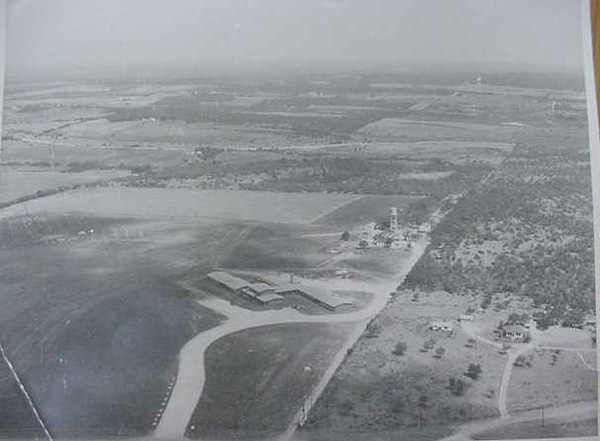
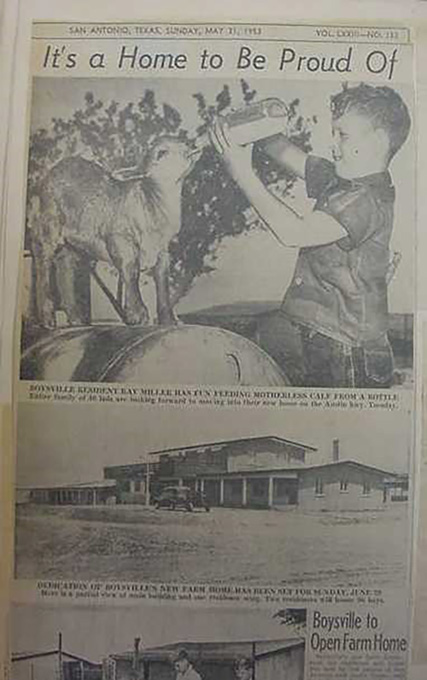
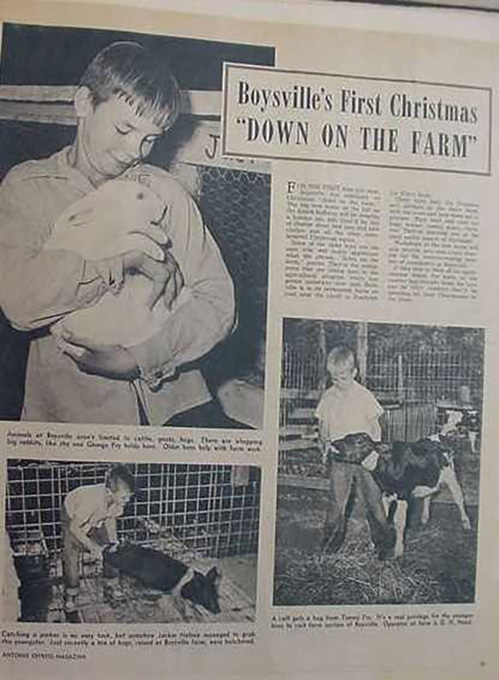
Instead of a single house, the new campus included several buildings, says Baxter. The slabs you saw could be all that remains of its dormitories, dining hall, library, gymnasium, administrative offices and maintenance buildings.
About 78 boys were served on the campus, Boysville's home for three decades. During the 1980s, as the city grew northward, the organization was approached by prospective buyers for its increasingly valuable property. This second home was sold in 1983 for $7.5 million to a Montgomery, Ala., developer.
Boysville used about $6 million to buy land and build a new facility on about 80 acres at its present location in Converse, on Loop 1604 at Rocket Lane. The current campus has nine residential cottages, a gymnasium, schoolhouse, library, chapel, barn and outdoor recreation areas. The remainder of the sale money went into an endowment fund.
"We were offered a deal we couldn't refuse," a spokeswoman told the Express-News, July 26, 1983. "We were sitting on 200 acres, and we didn't need that much property. It was a chance to upgrade the facilities and programs that we just couldn't pass up."
Three years after the move, Boysville started admitting girls in an effort to keep siblings together. For name recognition and tradition's sake, the co-ed institution is still called Boysville, though the current location serves 108 boys and girls, ages 5 to 18. Half the size of the previous acreage, the campus affords space for an additional 16 children in an emergency shelter as well as a transitional living program for eight young adults. Through a college scholarship program, Boysville also supports 15 students enrolled at Texas colleges and universities.
Boysville's second home has changed hands several times since the organization sold it, says Baxter. The old campus remains undeveloped.
Transcript of Ed Baxter from Boysville taken by Sue King. June 2005
What was the first location of Boysville?
521 A street. Avenue A, they called it in San Antonio. They started out in 1943 very slowly, few kids at a time. At the max they had 24 boys down there, but average about 18 or so. I have been with Boysville since 1992. Boysville was moved to Live Oak in 1953, not sure if the city was a city at that time, but they moved into the area that became the city of live oak in summer of 1953. Having been downtown they moved to a rural campus. They stayed in Live Oak till 1983. They moved to the current location in 1983.
Why did they decide to move Boysville?
The land value got so high it was just difficult to stay there. There was no intention of Boysville to actually move with the exception that they wanted to grow and change the programs they had. Several developers approached them and the price kept going up. Back in the early 80’s land prices were at all time high. Still haven’t reached that price. We had a max program of 78 boys and they were in dormitory style facilities. Meaning there would be several kids in a building. When we sold the property in 1981, and bought the land where we are, we expanded the program to 108 kids, and moved them into cottages, which were more like a family. We would have 12 kids to a private room as opposed to 30 in a dorm. Kids can feel more like a family. That was the reason for the sale.
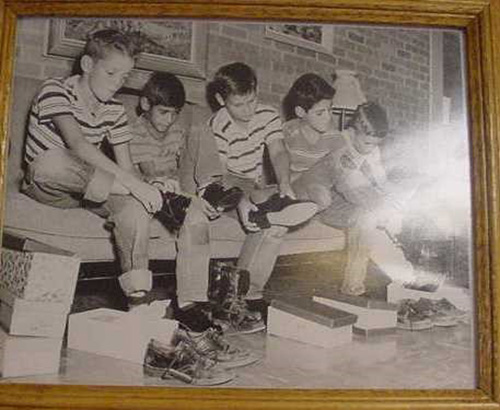
What initiated the move to Live Oak?
We hoped to get a more rural setting. Downtown SA was all in one building. It was in the center of the city, and we wanted to move to a rural area for agricultural program to raise animals and have a more outdoor type setting.
Were they taught more responsibility when they moved to Live Oak?
Well, it was a different type of responsibilities. Downtown they were taught responsibility for their yard, but in Live oak, there was an agriculture type program and kids were in charge of animals and a 4H program. A more land, property management type responsibility.
How true was the rumor that there was a tunnel underground to move cows?
What was there was a storm cellar, but there are a lot of rumors about moving cattle. We did have a farm on the other side of 1604 that had cattle, and Boysville also had property out in the Living Water’s country club is now, Gardenridge, but they never farmed that land. They farmed land closer to Retama Polo fields are now. Not a big operation, just enough for kids to be involved in 4H.
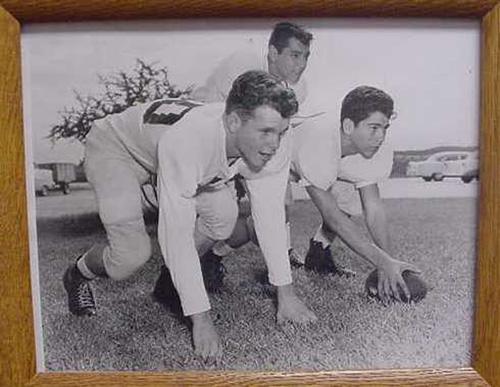
Where was initial site of Boysville in Live Oak?
Only one location, right behind the location where the water town is, where the current tower is located by the RBFCU corporate headquarters. Just southeast of there on top of the hill.
Did you see the write up in the paper at the first of the year and he found some buildings?
As a matter of fact, that guy called and asked me some questions. The lady in the paper who did the historic research in the paper had a right up.
How many residents did Boysville have in first year?
We probably had 25 to 30 and it quickly grew to a 78 capacity over two years. We stayed at capacity until we moved here.
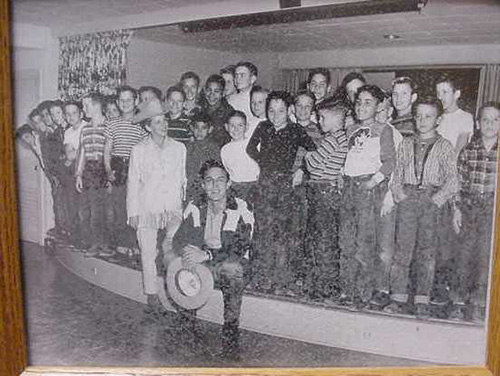
Jimmy Dean with the Boysville's Students
Do you remember the individuals who operated Boysville?
I don’t know at first.
Did Ken and Lil Staily have a hand in that?
I don’t know when they came to Boysville, but they did have a lot to do with it. Sergeant was the central kitchen cook where kids and staff ate together. Serge was involved not just in food, but all kinds of activity. I have met adult men who knew Serge when they were young and had praise for his impact on their lives.
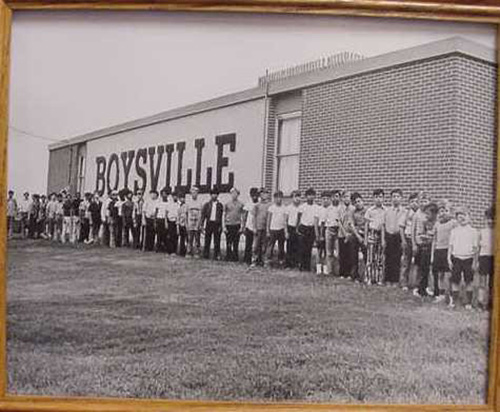
Did they take it on or where they asked?
They came to Boysville like many people as volunteers and dedicated their whole time. And then became employees. They continue to be benefactors still to this day.
How large did the surrounding community play in the success of Boysville?
It has always been that the surrounding community has to support the program, welcoming us, encouraging our kids, financial support. The reason why our location exists so close to Live Oak is because Live Oak was in the original Judson School dist. When we moved, we wanted to stay in the Judson School Dist, and because of the support we had in the community. The teachers, the people welcoming into their school system. Judson supports our system and it is vital to our program.
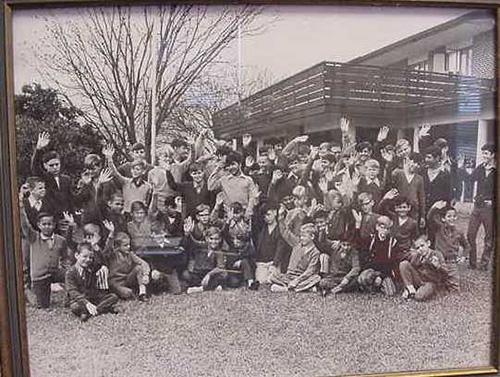
Was it just a boy’s facility?
We didn’t take girls in until 1986, after we moved to the curtr3ent location. The live oak site was a dorm arrangement, and when we moved here, we had individual homes, we built Ellison cottage for girls and it housed 12 girls. The original plan was to take girls in if they had a brother in the program already. That didn’t last very long and we took whatever girls who needed to be placed. If they needed our services we take them. Now half of our placements are girls.
Looking back at the Live Oak site what is the biggest change?
There have been an awful lot of changes. The change from the percentage of kids returned to biological families has increased. During the LO years, it was the norm that when a boy would come to our program, they would stay till high school was over. 60-70% would come and stay. Currently, over 80% return to their biological families before HS graduation.
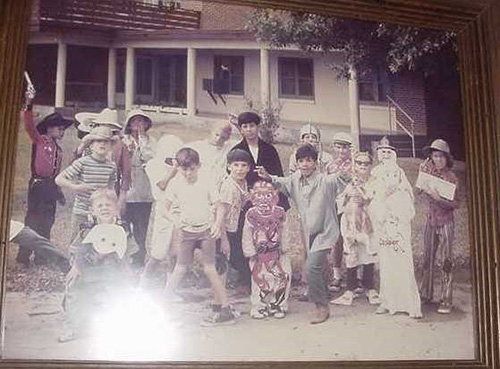
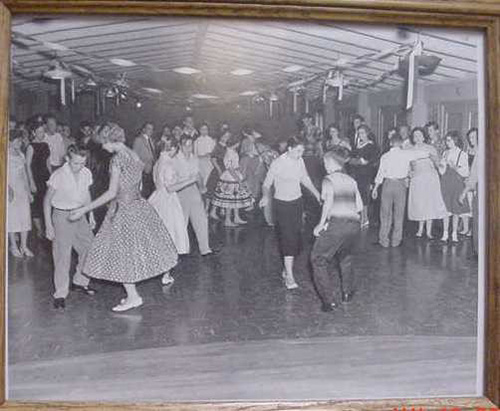
What are your biggest success stories?
Success is measured in kids who become capable in developing their own families. There are boys who have grown up here to make a lot of money, and some who have become successful in terms of their careers. Our success measurement is if that former resident becomes a successful of a family, and raises children, it is a measure of success. No matter if he is an auto mechanic or a truck driver, or a small business owner. Success is always measured in terms of creating a family that is viable for people who don’t have families. We have had men who have become professional football players, in the military, but if they bring their children and say this was my home, then they have broken the cycle of abuse, and that is our goal.
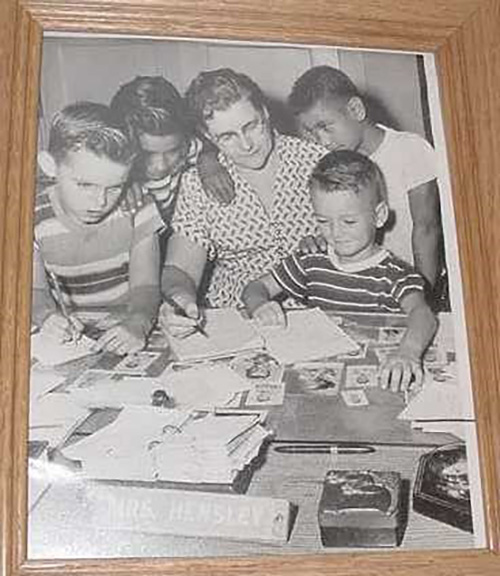
Looking at the inception in SA and to Live Oak, What persons are significant?
Hundreds and hundreds of people. I’ll name a few, but leave out more, Original founder was Don Hall. He was a court reporter in SA in family courts and was also a Baptist minister part time. He saw the need for homeless boys and girls and saw boys coming through court system without a family or a place to go, and saw boys living in parks. He started taking boys into the original facility that they got from the founder of the Pearl Brewery in 1943. The downtown Kiwanas and optimist club provided many, many leaders over the years. The best thing for you to do is refer you to the presidents over the years and the board of directors over the years. We have just had a multitude of leaders from SA to bring into our program. Most direct knowledge of individuals is limited to 1985. The central figure of Boysville was a man named Marshall Crook? Who operated fabric stores in SA. He was a big part of the design to move to this area. A lady named Geneva German? Came to us from an auxiliary around the Alamo Heights area and was instrumental in the design of this facility. The ex director during the time they moved to this facility was a man named Norm Charelton. He had been at this campus since 1974 and over saw construction of current facility. We have had a lot of people. One key figure in founding of the foundation was Maury Holden who was a SA business leader. Current leaders who run the gammet. One maiden leader on financial backing is Alex Hout? Who used to own Alamo Title. Wally Jacobs current secretary and Boysville trustee for many years. The Housemans founded the program on our chapel and dedicated that. Two of the key people in early years 1950’s who moved to 4H were Eunice and Red Connel of Connell life science building and agricultural center. They stared that Agriculture programs. Cottage named after Joe and Harry Freeman who were SA leaders. Also named after Mr. Holloman and Edmond Dweese. One man in my lifetime that I knew who was called Mr. Boysville, who came before I came along. Jack Ridgeway. I met him in 1985 and knew him till his death. He was a local practice attorney who was more instrumental into what Boysville has become today from the early 60’s and 70’s than any one individual. In his single practice, he focused on family law and estates and those kinds of things. He has done more than any 10 men in terms of financial support. He was on the campus at every event and ever meeting. I remember the night before he died I sat on his bed at the n ix hospital about some estates that would come to benefit Boysville. I told him to put it away and rest and he said that he really needed to get it done because it was his life and passion. Still today we are receiving gifts from estates Jack had set up. He was the most dedicated volunteer than any one I have know. We have strong leadership on our board now.
Current capacity of Boysville has changed a little. Add it all up you have 119. We also reach a lot of kids in family programs in parent education.
The Boysville Rocket
He was Judson’s 1st athletic superstar and a recent inductee to the Judson Independent School District’s Hall of Honor.
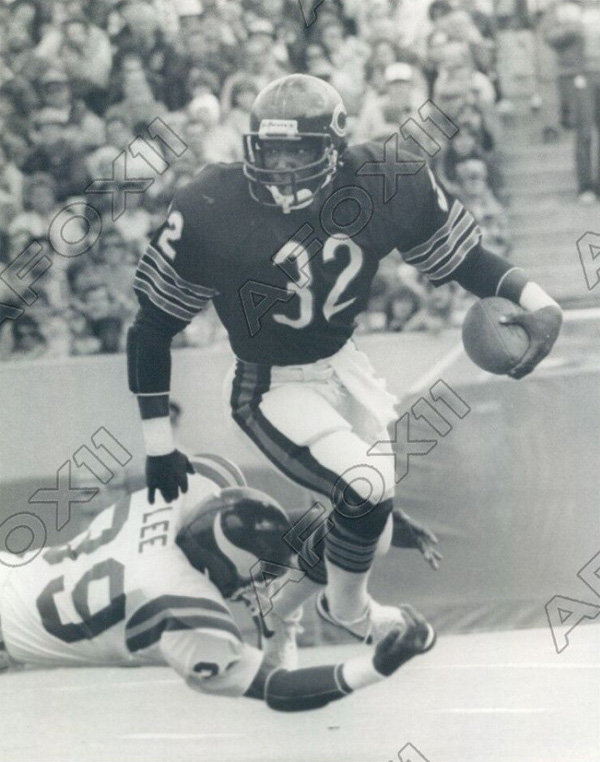
Anthony Hutchison’s story starts as an eight-year-old living in Bay City, Texas. A child of a single mom with three younger sisters and two older brothers, Anthony’s single mother had a tough decision to make, and that decision changed his life forever!
She decided she could not care for all her children alone, so she made the choice to send 8-year-old Anthony to A Boy’s Home in Austin, TX. Being away from his family and friends, Anthony became a victim of physical abuse in that boy’s home, and as a result he became a fighter—fighting for his life. He fought so much the facility’s Director made a call to Boysville in Live Oak, TX, and after only a year in Austin, Anthony was transferred.
While in Boysville, Anthony met Dr. Charleton and his family, and they began to foster and mentor Anthony. To this day, Anthony maintains a relationship with that family. While living in Live Oak between stays Charleston home and Boysville, he attended Kirby Middle School, where he joined a group of friends on the track team.
For the first week, Anthony ran barefooted because the district did not provide track shoes in those days. However, even barefoot, Anthony won every race. Soon afterwards, the coaches found him some shoes.
After Kirby Middle School, Anthony went on to Judson High School and joined the Judson Rockets football team. Then, The Rockets had never had a winning season. Anthony’s senior year, however (1977), as the starting running back, he led Judson to an 11-1 season, and a city championship. He was the first of a long line of great running backs at Judson High School, and his speed and running skills earned him a full scholarship to Texas Tech University.
During Anthony’s senior year at Texas Tech, he was one of the nation’s leading rushers in the old Southwest Texas Conference, outrushing the SMU Pony Express duo, Craig James and Hall of Famer Eric Dickerson.
Unfortunately, during his senior year, Anthony was injured and for several weeks, the coach kept him on the bench. With only 3 or 4 games left in his last season, he was asked by a wealthy booster club member when he would be able to play again. Anthony told the man he was ready at that time. Astonished, the booster told Anthony to be ready the following Monday and that Monday, Anthony was back in the starting lineup. In the three remining games, Anthony rushed for nearly 1000 yards.
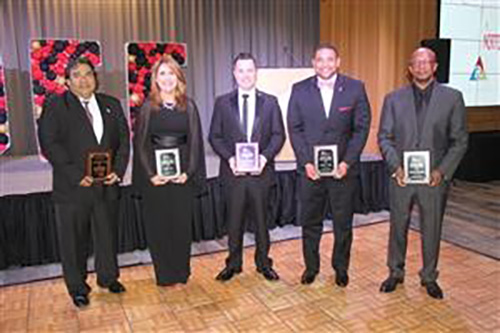
The performance from those last three games led him to be drafted in the 10th round of the NFL draft by the Chicago Bears in 1983. He became the backup running back behind Hall of Famer, Walter Payton.
By his second season in Chicago Training Camp, Coach Mike Ditka (at Walter Payton’s insistence) informed Hutchinson that he was traded to the Buffalo Bills. A year later, Hutch was playing for the Bills, and the Chicago Bears won the Super bowl!
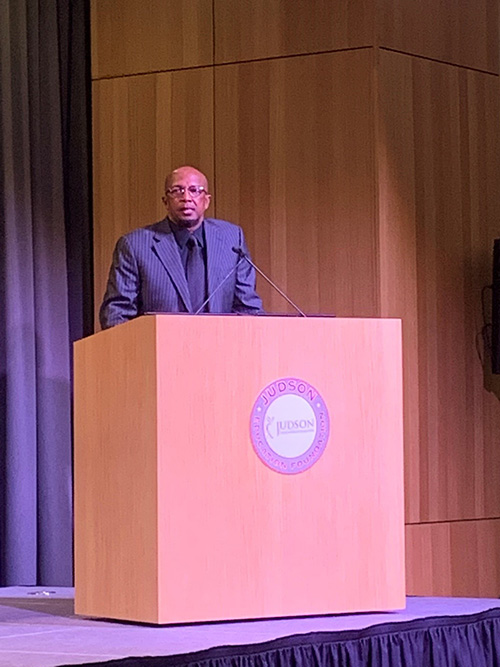
Disillusioned and refusing to adjust to the frozen weather in Buffalo, NW, Anthony played one season with Buffalo and despite a contract offer, he left Pro Football and returned to Houston, TX to start his life after football. He had saved his money, but like many ex-football players, fell victim to financial advisors who swindled away his money. He went from semi well to do, to broke, within a year.
While walking the streets of Houston looking for work, he saw a man landscaping an apartment complex. He went inside the complex to speak to someone about cutting grass. Ironically, the management of the apartments were pleased with the current landscaper either, asked him if he thought he could do a better job. Anthony’s answer was a profound “YES.” He got his first landscaping contract and it led to several others. Just as his firm was gaining legs, the economy bottomed out and Anthony lost all contracts and was back on hard times. Proving resilient, he wasted no time using the finances he had left to start over again.
This time while driving through Houston suburbs, he noticed tract homes being built. Anthony decided to give home building a try and quickly learned how much money was in construction, although, he had never built as much as a shelf. Anthony went to the library and studied to be a housing contractor. He used his remaining funds to buy a tract of land, materials, and a created a small crew, who then built and sold his first house. That was the beginning of Anthony’s Construction Firm.
Due to yet another downturn in the economy, he went bankrupt. This time he not only lost his business, but his wife filed for a divorce. They had one child, a daughter, Nicole. Once again, Hutch started over, and never gave up. He picked up his life and this time it worked.
Restarting his landscaping business, he now holds the contract for the Houston Independent School District, among other large entities. He owns a residential/commercial Construction business and a financial business for refinancing homes. Gaining success in everything he has done; Anthony is now a prominent businessman. His story went from rags to riches, to rags, and now back to riches. This is the story of the “Boysville Rocket!”

